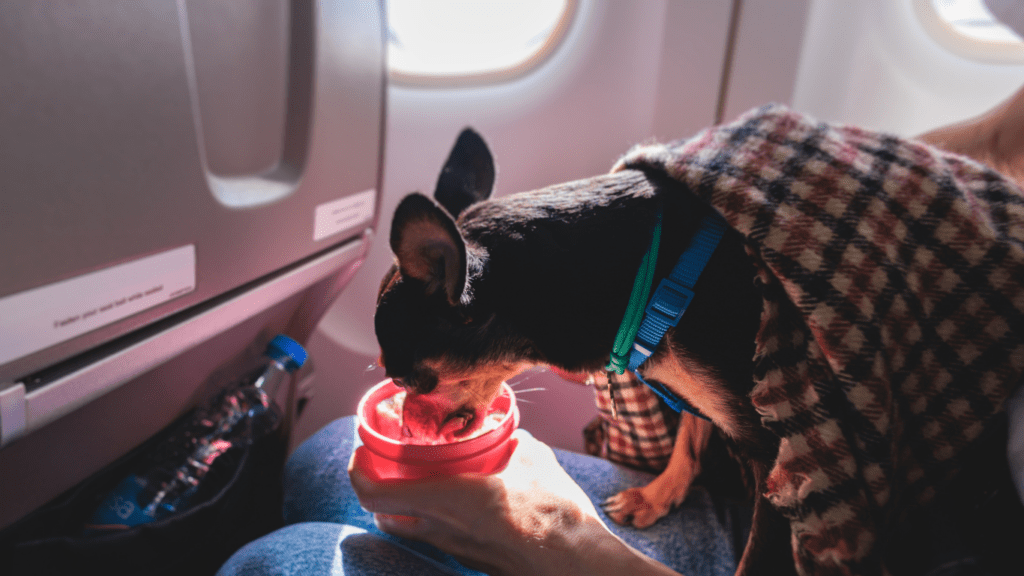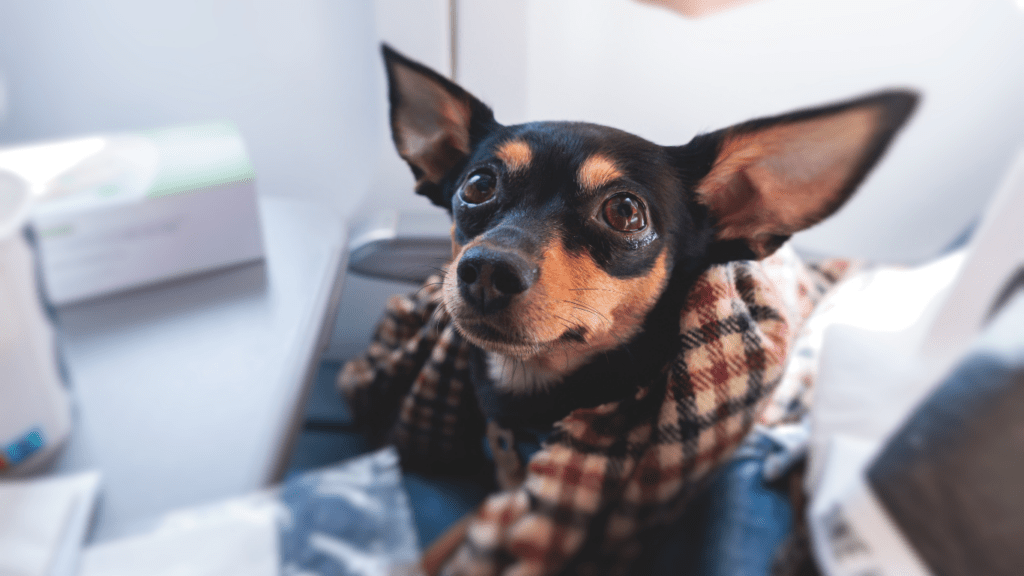Overview of Pet Travel
Flying with pets involves understanding a maze of airline-specific rules. Regulations vary, especially concerning pet size, breed, and whether they travel in the cabin or as cargo. Knowing these details ensures smooth check-ins and security screenings.
Types of Allowed Pets
Most airlines allow cats and dogs, while some also accept birds, rabbits, and guinea pigs. Consult your airline’s policy to confirm allowable pet types before booking.
In-Cabin Pets
Small pets in carriers can often travel in the cabin. The pet carrier must fit under the seat. Typically, carriers should be ventilated and spacious enough for the pet to stand and turn. Check your airline’s exact dimension requirements.
Cargo Hold Travel
Larger pets usually travel in the cargo hold. Cargo areas are climate-controlled to ensure pet safety. The pet’s breed, particularly brachycephalic (short-nosed) types, may face restrictions due to breathing risks.
Health and Documentation
Airlines usually require a health certificate indicating that the pet is fit to fly. Vaccinations should be up-to-date. International travel may need additional documentation such as import permits or quarantine certificates.
Fees and Booking
Traveling with a pet usually incurs a fee, separate from passenger tickets. Fees vary by airline and destination. Early booking is advisable, as airlines often limit the number of pets on any given flight.
Major Airline Policies for Flying with Pets

Understanding the pet policies of major airlines helps ensure a smooth travel experience. Here’s a look at the specifics for American, Delta, United, and Southwest Airlines.
American Airlines
American Airlines allows cats and dogs to travel in the cabin, provided the pet and carrier’s combined weight doesn’t exceed 20 pounds. Pets must be at least 8 weeks old. The carrier should fit under the seat in front of you, with maximum dimensions of 19″ x 13″ x 9″. Pets are not permitted on transatlantic flights. Fees for in-cabin pets are $125 each way.
Delta Airlines
Delta Airlines accommodates small dogs, cats, and household birds in the cabin. Pet carriers should not exceed 18″ x 11″ x 11″. The carrier plus pet must not weigh more than 20 pounds. Pets younger than 10 weeks aren’t allowed. Pets cannot fly in-cabin on international or certain long-haul domestic flights. The in-cabin pet fee is $125 for domestic flights and $200 for international flights.
United Airlines
United Airlines allows cats and dogs to travel in the cabin on most flights under 12 hours. The combined weight of the pet and carrier must not exceed 18 pounds. Carriers should fit under the seat, with dimensions up to 17.5″ x 12″ x 7.5″. Pets must be at least 4 months old to travel in-cabin. United charges a $125 fee for in-cabin pets each way, with an additional $125 charge for layovers over 4 hours.
Southwest Airlines
Southwest Airlines permits small cats and dogs to fly in the cabin, as long as they fit in an approved pet carrier with maximum dimensions of 18.5″ x 8.5″ x 13.5″. Pets and carriers must weigh no more than 20 pounds combined. Pets must be at least 8 weeks old. Only domestic travel is allowed for pets. Southwest charges a $95 fee per pet carrier each way.
What to Expect at the Airport
Navigating the airport with a pet can feel overwhelming. Understanding the steps involved will ease the process.
Check-in Procedures
- Check in with your pet at the airline’s designated counter.
- Most airlines require you to arrive a few hours early to accommodate additional paperwork.
- Have your pet’s health certificate, vaccination records, and travel documents ready.
- Many airlines limit the number of pets on each flight, so early check-in increases your chances of a smooth experience.
Security Screening
Security screening involves a few extra steps for pets. Remove your pet from their carrier and send the carrier through the X-ray machine. Walk your pet through the metal detector on a leash or hold them. TSA agents may conduct additional screening, so be prepared for potential delays.
Pet Relief Areas
Pet relief areas are available in most airports. Check the airport map or ask an airport employee for the closest location. These areas provide a safe space for your pet to relieve themselves, and some airports even have post-security pet relief stations for easier access during layovers.
In-Flight Experience for Pets
Flying with pets involves understanding the differences between cabin travel and cargo hold travel.
Cabin Travel
Most small pets, such as cats and small dogs, can travel in the cabin. Airlines require that pets remain in a carrier under the seat in front of the owner throughout the flight. It’s important to use an airline-approved pet carrier that provides adequate ventilation and enough space for the pet to stand and turn around.
I bring pet essentials in my carry-on, including:
- food
- collapsible water bowl
- pee pads
Some airlines allow pets in the cabin only on certain flights or routes, so checking is essential. It’s also necessary to consider the pet’s comfort during the flight. I usually acclimate my pet to their carrier before the trip to reduce stress.
Cargo Hold Travel
Larger pets and certain breeds travel in the cargo hold. The cargo hold is temperature-controlled and pressurized for pet safety. I use a sturdy, well-ventilated crate for cargo hold travel, ensuring it meets airline specifications.
Airlines often require health certificates dated within 10 days of departure. I make sure to label the crate with my contact information and feeding instructions. While in the cargo hold, pets aren’t accessible, so it’s crucial to provide them with sufficient food and water for the duration of the flight. In cases of layovers, I make arrangements for pet care during the transition between flights to minimize discomfort.
Understanding these options helps pet owners ensure their pets have a comfortable and safe flight.
Tips for Flying with Pets
Flying with pets can be stressful without proper preparation. Adopting the right strategies ensures a smoother experience.
Preparing Your Pet for the Flight
Ensure your pet is comfortable with its carrier. Acclimate them by letting them spend time inside with treats and toys. Visit the vet for a health check and ask about sedatives if necessary. Feed your pet a light meal a few hours before departure to avoid travel sickness. Use a dog or cat harness to control movement while navigating the airport.
Necessary Documentation
Check the airline’s pet travel policies for necessary documentation. Typically, these include a health certificate issued within 10 days of travel and proof of rabies vaccination. International travel may require additional forms like import permits or quarantine reservations. Label the pet carrier with your contact information and any relevant medical conditions.



 Veterinary Advisor & Health Expert
Anthony Brooks is the in-house Veterinary Advisor at Pet Paw Shack, offering expert advice on pet health, disease prevention, and general veterinary care. With years of experience as a licensed veterinarian, Anthony helps guide pet owners through essential topics like vaccinations, routine checkups, and emergency care. His commitment to keeping pets healthy ensures that Pet Paw Shack delivers trusted and accurate medical insights.
Veterinary Advisor & Health Expert
Anthony Brooks is the in-house Veterinary Advisor at Pet Paw Shack, offering expert advice on pet health, disease prevention, and general veterinary care. With years of experience as a licensed veterinarian, Anthony helps guide pet owners through essential topics like vaccinations, routine checkups, and emergency care. His commitment to keeping pets healthy ensures that Pet Paw Shack delivers trusted and accurate medical insights.
